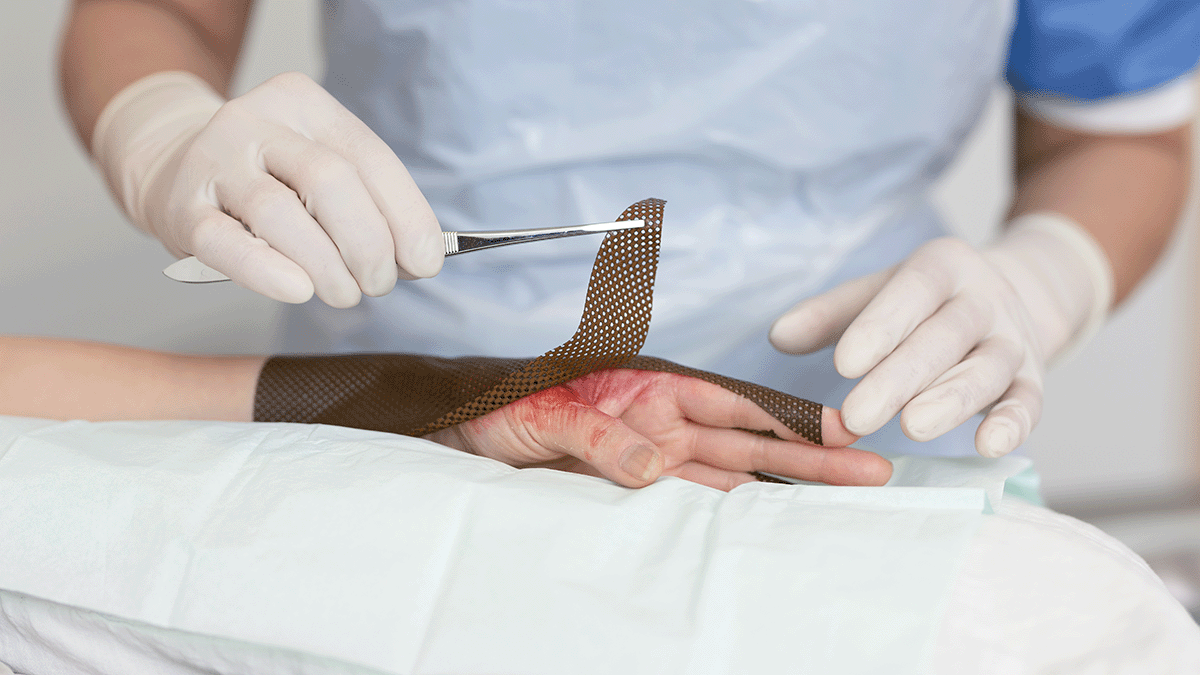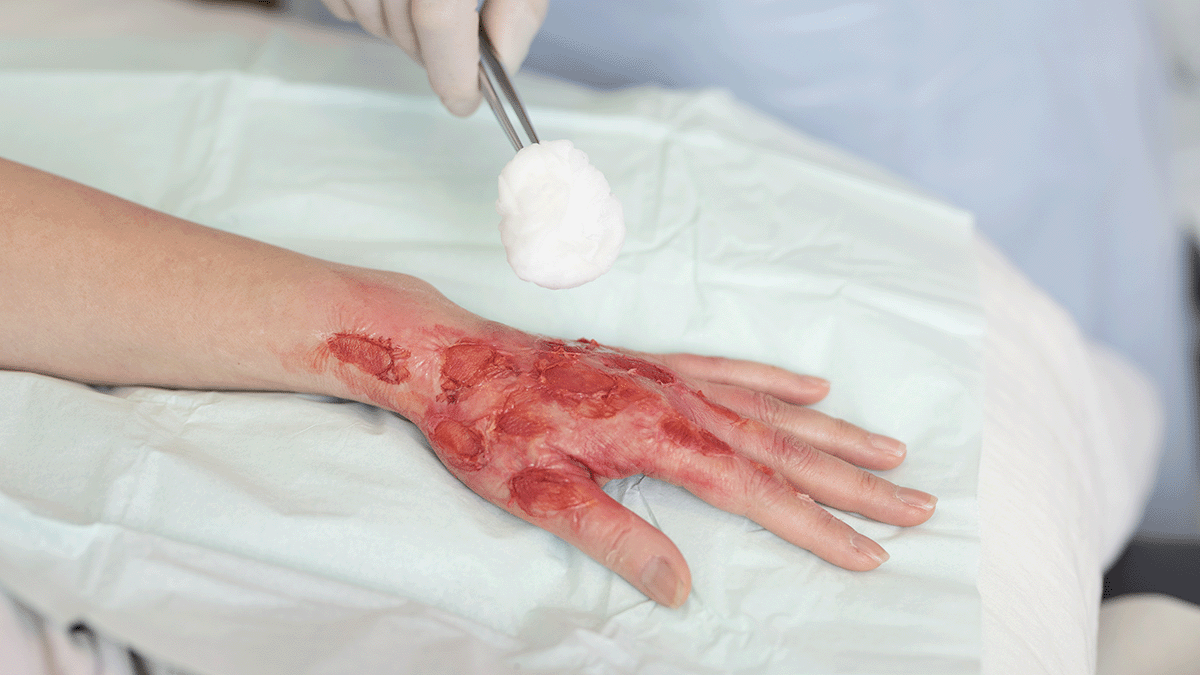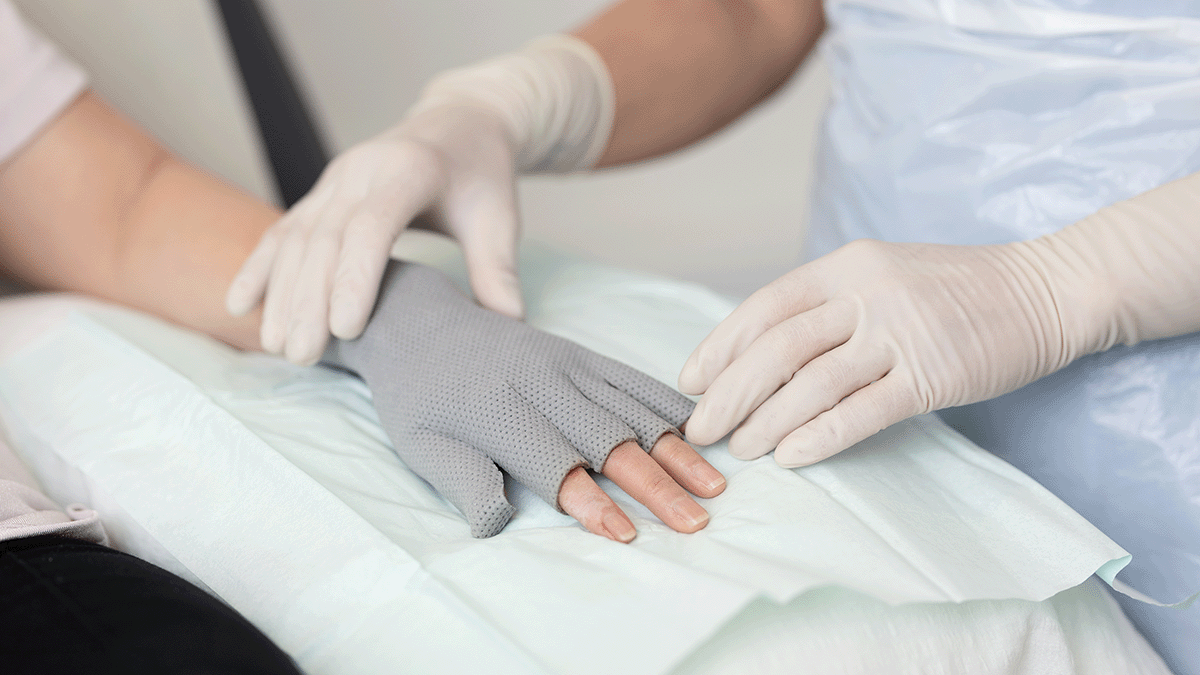Diabetic foot ulcer is a common and serious complication of both type 1 and type 2 diabetes mellitus1. Diabetes is associated with ischaemia, neuropathy, peripheral artery disease, and foot deformities that lead to a particularly high risk of developing foot ulcers and a low likelihood of ulcer healing.
Because of the reduced blood supply to the lower limb, diabetic foot ulcers face risk of necrosis, infection, and involvement of deep tissues, including bone2.
Approaches to the management of diabetic foot ulcer include debridement, protection from trauma, treatment of infection, control of exudate, and promotion of healing3.
Epidemiology
Patients with type 1 or type 2 diabetes mellitus have a lifetime risk of a foot ulcer of up to 25%2 4. Infected or ischaemic diabetic foot ulcers account for approximately 25% of all hospital admissions for patients with diabetes3 4. Diabetic foot ulcers account for almost two-thirds of all non-traumatic lower limb amputations performed in the Europe and the US1 3 5.
The age-adjusted rate of lower-limb amputation is estimated to be 15 times greater in individuals with diabetes than in the general population1 2 4.
These findings show how important it is to manage diabetic foot ulcer appropriately, quickly, and effectively.
Aetiology
The causes of diabetic foot ulceration are a combination of chronic narrowing of small arterioles that supply oxygen to the tissues, diabetic arteriolosclerosis, which results in tissue ischaemia, and high venous pressure, resulting in tissue oedema and hypoxia2.
Patients with diabetes develop specific risk factors that lead to foot ulcers, including loss of sensation due to diabetic neuropathy, prior skin damage or ulcers, foot deformity or other causes of pressure, external trauma, infection, and chronic ischaemia due to peripheral artery disease1 2.
Clinical and economic burden
Globally, an estimated 422 million adults were living with diabetes in 2014, compared with 108 million in 19801. The global prevalence (age-standardised) of diabetes has nearly doubled since 1980, rising from 4.7% to 8.5% in the adult population, which reflects an increase in associated risk factors, mainly due to obesity1.
Rates of lower limb amputation, due to diabetic foot ulcer, are typically ten to 20 times those of non-diabetic populations7. In the US, in 2010, approximately 73,000 non-traumatic lower-limb amputations were performed in adults aged 20 years or older with diabetes; 60% occurred in people with diabetes7.
In the US, Medicare claims data showed that between 2006 and 2008, patients with a diabetic foot ulcer were seen by their outpatient healthcare provider about 14 times per year and were hospitalised about 1.5 times per year. The US claims data also showed that the cost of care for each claimant with a diabetic foot ulcer was about USD 33,000 for all Medicare services per year8. Patients with a lower extremity amputation were seen by their outpatient healthcare provider about 12 times per year and were hospitalised about twice per year, with the total cost of care of USD 52,000 per year8.
Effects on patient quality of life
Studies have shown that people with diabetes who have a healed foot ulcer have a greater health-related quality of life (HRQoL) when compared with people with chronic, non-healed diabetic foot ulcers when evaluated using standard questionnaires9. Also, for caregivers of diabetic people with chronic, non-healing foot ulcers, there is a large emotional burden9.
Risk of infection
Chronic non-healing ulcers of the foot are susceptible to infection, which can lead to serious complications, including osteomyelitis and septicaemia10 11.
When a diagnosis of ulcer infection is made, treatment is based on the clinical stage of infection, and X-ray imaging is usually performed to exclude or confirm osteomyelitis11. The most common infecting organisms include aerobic Gram-positive cocci, aerobic gram-negative bacilli, and anaerobic organisms in deep ulcers10 11 12.
According to the Infectious Disease Society of America (IDSA) guidelines, infection is present if there is obvious purulent drainage and/or the presence of two or more signs of inflammation (erythema, pain, tenderness, warmth, or induration)11. The management and treatment of infection of a diabetic foot ulcer should include a multidisciplinary team of experts including surgeons, infectious disease specialists, diabetologists, microbiologists and nursing staff11.

In this episode
Listen to Professor Paul Chadwick talk about the role a patient play in the care of diabetic foot ulcer and how to empower them.
Prevention and risk management
Taking preventive measures and understanding the risks associated with diabetic foot ulcers are important factors in reducing incidence of serious consequences. Early diagnosis and treatment also contribute to managing the risk of developing.
In addition, educating and involving patients in their own foot care is an important and empowering aspect of managing risk and achieving better outcomes. Listen to Professor Paul Chadwick’s thoughts on patient empowerment in the podcast above.
Download the guide below to provide your diabetic patient with resources to help them learn more about caring for their feet.






